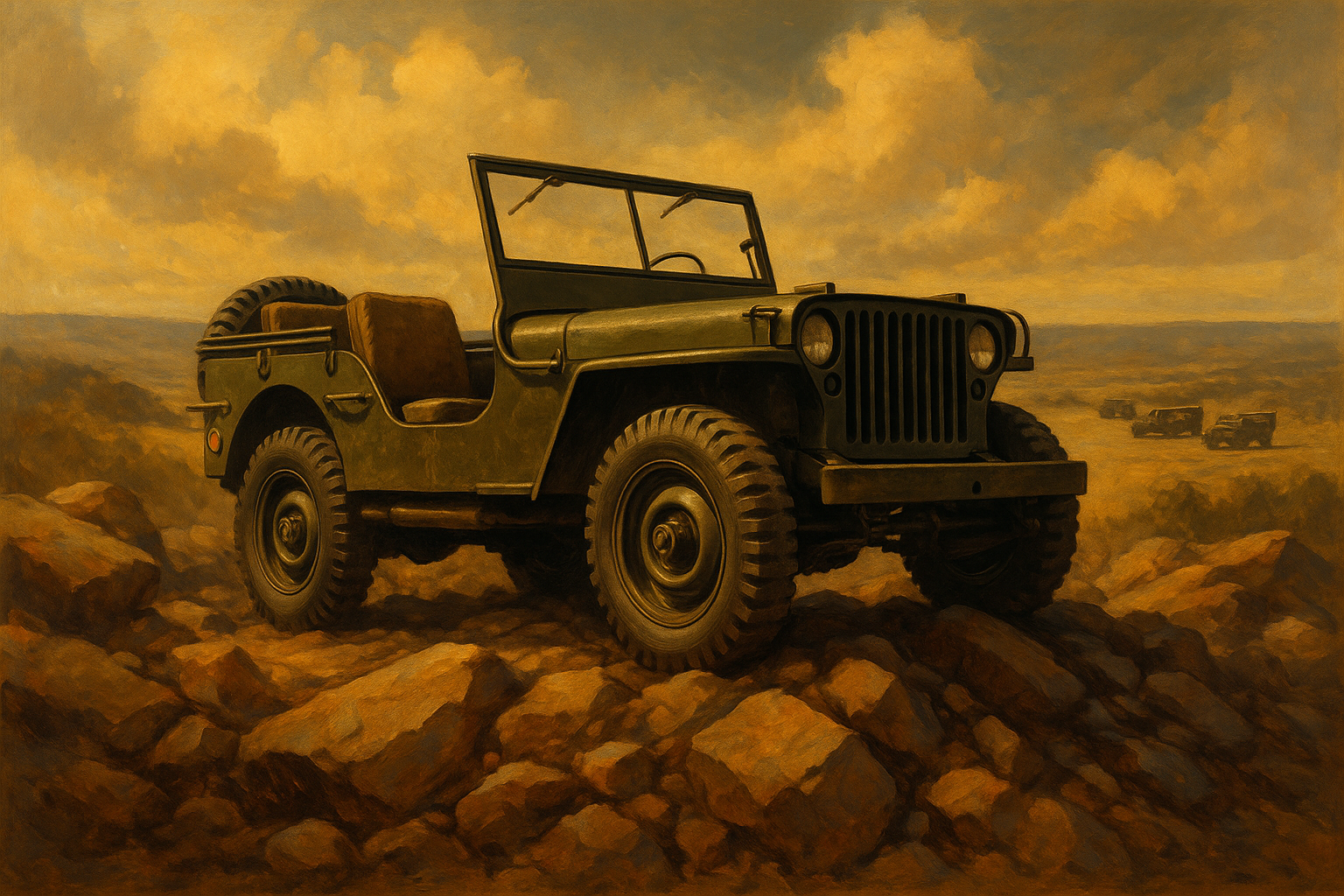Born from the crucible of global conflict, the Jeep is more than just a vehicle; it’s a rolling testament to American ingenuity and the spirit of adventure. Its story begins in 1940, with the U.S. Army on the brink of war and in desperate need of a light, go-anywhere reconnaissance vehicle. A small, struggling automaker, Willys-Overland, answered the call with its “MB” prototype. This rugged, indomitable 4×4 became an icon of the Allied victory in World War II, praised by soldiers and war correspondent Ernie Pyle as a “faithful as a dog, as strong as a mule, and as agile as a goat.” When the war ended, Willys wisely transitioned the MB into the civilian “CJ” (Civilian Jeep), offering a taste of freedom and capability to a nation eager to explore its own frontiers.
Through the decades, under the stewardship of Kaiser-Jeep, AMC, Chrysler, and now Stellantis, the brand built upon this legacy. It pioneered the luxury SUV with the original Wagoneer in the 1960s, ignited the modern SUV craze with the revolutionary unibody Cherokee (XJ) in the 1980s, and cemented its off-road supremacy with the ever-evolving Wrangler. Jeep became synonymous with breaking boundaries, promising owners a “Go Anywhere, Do Anything” lifestyle. This deep-seated cultural resonance made Jeep one of America’s most beloved automotive brands. Today, however, this American legend is navigating its most treacherous trail yet, right here on its home turf.
For six consecutive years, Jeep’s sales in the United States have been in a steady, worrying decline. After hitting a peak of nearly a million vehicles in 2018, the brand has found itself losing ground, a troubling trend that has sounded alarm bells from Detroit to Wall Street. This downturn isn’t a simple market fluctuation or the result of a single misstep. It’s a complex crisis stemming from a confluence of internal strategic decisions, intensifying competition, and shifting consumer priorities. And while geopolitical tremors like US tariffs have added pressure, the core of Jeep’s struggle is a battle for its very soul.
One of the most significant self-inflicted wounds has been a pricing strategy that has pushed the brand progressively upmarket. The average transaction price for a Jeep has soared, placing iconic models like the Grand Cherokee and Wrangler out of reach for many of the blue-collar and middle-class families that once formed its loyal base. In an era of high interest rates and economic uncertainty, this premium positioning has created a barrier to entry. The everyman’s off-roader has, in the eyes of many, become a luxury item, alienating traditionalists and sending budget-conscious buyers flocking to more affordable alternatives.
Compounding this affordability crisis are persistent and well-documented concerns about quality and reliability. While the Jeep name evokes images of unshakeable durability, reports from J.D. Power and Consumer Reports have frequently placed the brand near the bottom of industry rankings. A reputation for nagging electrical issues, powertrain problems, and costly recalls has begun to overshadow its rugged image. In a hyper-competitive market where consumers research every detail, a perception of poor reliability is a powerful deterrent, directly challenging the brand’s core promise of dependable capability.
Simultaneously, the competitive landscape has transformed into a veritable battlefield. The SUV market, a segment Jeep once defined, is now saturated with formidable rivals. Ford’s resurrected Bronco has directly attacked the Wrangler’s off-road throne with retro styling and modern features. Meanwhile, brands like Toyota, Honda, Kia, and Hyundai offer a vast array of crossovers and SUVs like the RAV4 and Telluride that deliver the on-road comfort, fuel efficiency, and family-friendly features most buyers prioritize, often with superior reliability ratings and at a lower price point.
Jeep’s product strategy has also created vulnerabilities. The discontinuation of the more affordable Cherokee and Renegade models left a gaping hole at the entry-level of its lineup. This decision effectively shut the door on many first-time buyers and those seeking a smaller, more efficient utility vehicle, forcing them to look elsewhere and severing a crucial pipeline for future brand loyalty.
To its credit, parent company Stellantis has recognized the flashing warning lights and is executing a multi-pronged counteroffensive. The company has enacted significant price cuts across key models, including the Grand Cherokee, and is rolling out aggressive financing offers to lure buyers back. A renewed marketing push aims to rebuild brand perception and reconnect with its heritage.
The boldest move, however, is a decisive pivot toward electrification. The plug-in hybrid 4xe versions of the Wrangler and Grand Cherokee have been a resounding success, making Jeep an unexpected leader in the U.S. PHEV market. This is just the beginning. The upcoming launch of its first all-electric vehicles—the sleek, performance-oriented Wagoneer S and the rugged, trail-ready Recon—represents a high-stakes gamble. These vehicles must not only attract a new, tech-savvy demographic but also prove that battery power can deliver the uncompromising capability that is the very essence of the Jeep name.
Ultimately, while external factors add to the complexity, the battle for Jeep’s future is an internal one. It is a fight to recapture the balance between premium aspiration and accessible adventure, to engineer vehicles whose reliability matches their legendary toughness, and to innovate for a new electric era without abandoning the spirit forged on the battlefields of World War II. The path ahead is steep and rocky, but for a brand built to conquer any terrain, this is the ultimate test of its “Go Anywhere, Do Anything” promise. The next few years will determine if this American icon can navigate the trail ahead or risk getting stuck, watching the world pass it by.














